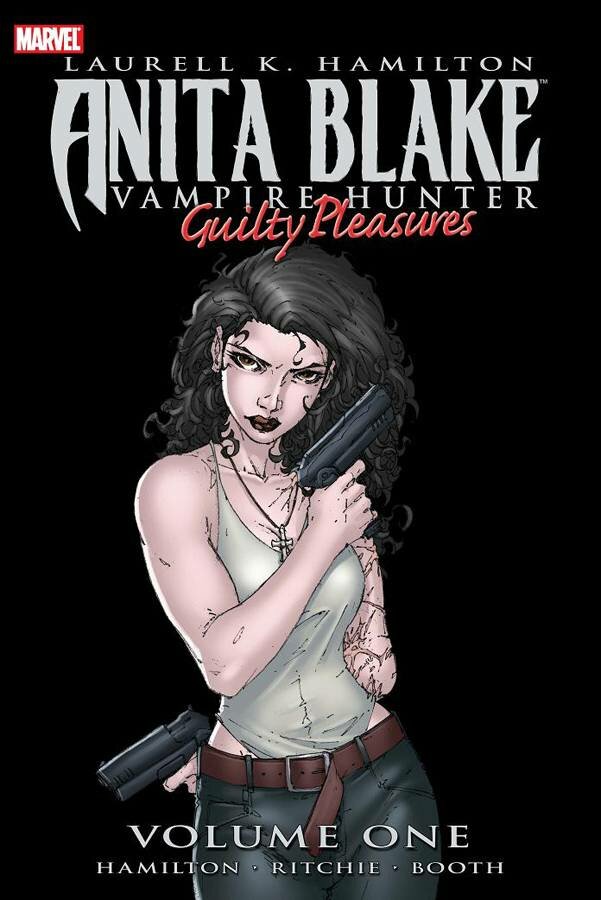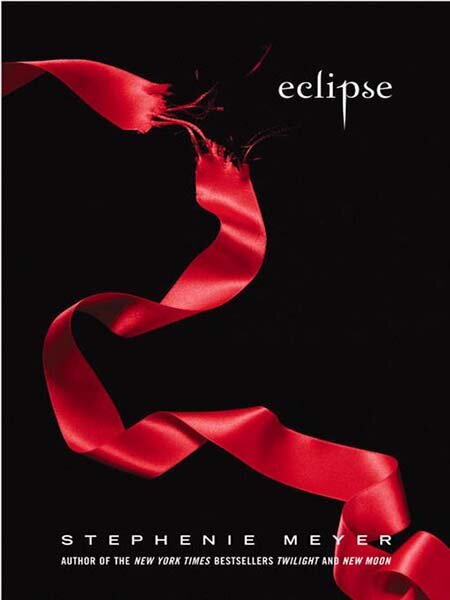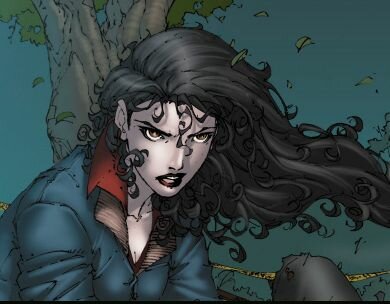Are the fangs real? Vampires as racial metaphor in the Anita Blake and Twilight Novels
Culture, Featured, Pop culture — By Mikhail Lyubansky on April 12, 2010 at 09:00They’re physically powerful and move with an unusual combination of grace and speed. They’re sexually seductive, in a forbidden sort of way, and dangerous-even the well-mannered, law-abiding ones are, at their core, threatening. They’re monsters, ever ready to prey and feed on human fears, if not their lives. Vampires? Of course. But vampires have never been just vampires. As vampire literature expert Elizabeth Miller1 points out, “the vampire always embodies the contemporary threat.” Sure, the Buffy, Anita Blake, and Twilight novels can be read as light, escapist fiction, but intended or not, the vampires within represent a number of marginalized groups that are perceived as a threat by mainstream society, particularly immigrants and racial minorities. This essay brings this racial metaphor to the foreground.
It All Starts With Dracula
It doesn’t, of course2, but Dracula is the most famous vampire of all. More than 200 films have been made featuring the Count, and the estimate of films that reference Dracula is in the 600s. And that’s just film. The Anita Blake and Twilight series are part of an entire genre of vampire novels (all undoubtedly influenced by Dracula) that now numbers more than a thousand. Perhaps not quite the way the good Count intended, but Dracula did indeed sire an entire universe.
Stoker’s novel was itself part of a literary movement called “invasion literature,” a genre that included more than 400 books, many bestsellers, in the period from 1871 to 1914. Invasion literature was driven by anxiety about hypothetical invasions by foreigners (H.G. Well’s War of the Worlds is the prototypical and best known work), an anxiety that Stoker deliberately (pardon the pun) stoked with his tale of Dracula, who polluted the English bloodline both literally and metaphorically. Indeed, what distinguished Dracula from his vampire predecessors is that his attacks involved not only the possibility of death but the actual loss of one’s identity, in particular one’s racial identity. As John Stevenson observed in “A Vampire in the Mirror: The Sexuality of Dracula,” blood is not just food, semen, and a means to eternal life, but also a “crucial metaphor” for racial identity. Dracula’s threat, Stevenson argues, is not mere miscegenation (the mixing of blood) but deracination, for Dracula’s sexual partners become pure vampires, with loyalties to Dracula, not Britain.
This perceived racial threat to Britain is the subject of Stephen Arata’s “The Occidental Tourist: Dracula and the Anxiety of Reverse Colonization” in which he describes vampirism as “a colonization of the body” and “the biological and political annihilation of the weaker race by the stronger.” At a time when British global influence was waning, unrest in its colonies rising, and concerns about the morality of imperialism increasing, Dracula, according to Arata, represented “deep rooted anxieties and fears” of reverse colonization, of civilized Britain “overcome by the forces of barbarism” in the form of immigration from Eastern Europe.3
But there was yet another perceived racial menace in nineteenth century England: the Semitic threat. Unlike the “barbaric” East Europeans, at the end of the nineteenth century, European Jews were relatively literate and overrepresented among the bourgeois class. They were nonetheless resented, distrusted, and disliked, perceived as the racial other, an “alien” nation even within their own native England. Dracula embodied this threat too. As Judith Halberstam observed in Skin Shows: Gothic Horror and Technology of Monsters, Dracula “exhibits all the stereotyping of nineteenth-century anti-Semitism” including anti-Semitic physiognomy such as a hooked nose, pointed ears, and claw-like hands, not to mention blood (a measure of racial status and purity) and money, both central features of anti-Semitism. Thus, Dracula is a hybrid of the racial other-the barbaric immigrant from without and the alien Jew within. As such, he posed a double threat to British nationalism and to British women in particular. In Halberstam’s words, “he is a monster versatile enough to represent fears about race, nation, and sexuality, a monster who combines in one body fears of the foreign and the perverse.”
The American Vampire
By the 1950s, the United States had replaced Britain as a superpower, and the threat of immigration and Semitic hegemony had given way to the racial threat posed by “negroes.” Richard Matheson’s I Am Legend4 integrates this new political landscape into the vampire mythology, with Black Americans, as Kathy Davis Paterson puts it in “Echoes of Dracula,” taking on the role of the metaphorical “monstrous Other that threatens the dominant society . . .from within.”
The plot of I Am Legend consists of a solitary man of English-German stock, Robert Neville, trying to survive in a post-apocalyptic world in which a terrible plague has turned the rest of humanity into vampires. The vampires have no obvious racial markers, but Neville consistently associates them with blackness. For example, he describes the vampires as “something black and of the night” and despairs that “the black bastards had beaten him.” But Matheson’s use of vampires to discuss race goes far beyond these relatively subtle racial labels. Like Stoker’s Dracula, his vampires provide a window into the racial dynamics of the time. Neville’s alcohol-induced internal dialogue is telling in this respect and as such is worth a close examination:
Friends, I come before you to discuss the vampire: a minority element if there ever was one, and there was one.
But to concision: I will sketch out the basis for my thesis . . . : Vampires are prejudiced against.
The keynote of minority prejudice is this: They are loathed because they are feared. . . .
At one time . . . the vampire’s power was great, the fear of him tremendous. He was anathema and still remains anathema.
Society hates him without ration.
But are his needs any more shocking than the needs of other animals and men? Are his deeds more outrageous than the deeds of the parent who drained the spirit from his child? . . .
Really, now, search your soul; lovie-is the vampire so bad? All he does is drink blood.
Why, then, this unkind prejudice, this thoughtless bias? Why cannot the vampire live where he chooses? Why must he seek out hiding places where none can find him out? Why do you wish him destroyed?
Ah, see, you have turned the poor guileless innocent into a haunted animal. He has no means of support, no measures for proper education, he has not the voting franchise. No wonder he is compelled to seek out a predatory nocturnal existence
Robert Neville grunted a surly grunt. Sure, sure, he thought, but would you let your sister marry one?
In this relatively brief passage, Matheson quickly establishes the parallel to Blacks (a minority element) and then accurately represents the racial climate of the time period, in which Blacks were “prejudiced against,” “loathed because they were feared,” and irrationally hated. But Matheson takes the metaphor even further. He notes that the vampires (Blacks) cannot live where they choose (legalized segregation under Jim Crow), must avoid the mainstream community in order to survive (lest a White person make a false accusation), and lack the means to both education and political efficacy.
Neville, like many White people of the 1950s, cannot but be aware of the injustice, and there is a part of him that questions its necessity. One gets the sense that he usually keeps such feelings at arm’s length, as one must to go along with an unjust system, but on this occasion the whiskey allows him to actually contemplate the system’s fairness, to not only recognize the injustice but to attribute the undesirable behavior (a predatory nocturnal existence) of the “minority element” to the injustice of the system rather than to the minority group’s inherently evil and uncivilized nature. It’s a perspective that none of Dracula’s hunters could have ever considered and was remarkable even for its day. But it’s a fleeting sentiment, one clearly produced by the whiskey, and Neville quickly dismisses it with a question reflecting an anti-miscegenation ideology that was characteristic of both late nineteenth century England and mid-twentieth century United States.
The vampires that populate the Anita Blake and Twilight universes are direct descendants of Dracula and the rest of the vampire lore. This is established in Twilight when Bella googles “vampires” when she begins to suspect that Edward might be one, as well as in the very first Anita Blake book, Guilty Pleasures, when we are first introduced to Jean Claude, who “looked like how a vampire was supposed to look,” as well as by occasional references to Dracula himself, as when, in her showdown with the master vampire Nikolaos, Anita remarks, “all we need is the theme from Dracula, Prince of Darkness, and we’ll be all set.” However, just as the sociopolitical landscape changed significantly from Dracula’s time to the time of I Am Legend, by the time Bella moves to Forks and Anita Blake gets into the vampire hunting business, the sociopolitical Zeitgeist had undergone another substantial shift.
By the early 1990s, the multiculturalism movement had given rise to the possibility that immigration and racial diversity might be valued as well as feared, and mainstream sensibilities had begun to reject explicit racism and xenophobia, even if both often brewed not far below the surface. It is no surprise then that the vampires of the Anita Blake novels have made similarly great strides in this regard since I Am Legend, so much so that in the Anita Blake novels, the Supreme Court’s fictional Addison v. Clarke “ruling gave us a revised version of what life was, and what death wasn’t” (Guilty Pleasures). The upshot of the Court’s decision is that vampirism was legalized in the United States, giving vampires legal status along with certain rights. The extent of those rights was still being debated, but Addison v. Clarke made the murder of vampires illegal without a court order of execution. Immigration of foreign vampires was still regarded as a threat, but both Addison v. Clarke and the vampire suffrage movement signaled a clear growing acceptance of domestic (i.e., American) vampires. As such, Hamilton’s vampires may be monsters, but they are no longer aliens.
Not surprisingly, given the sociopolitical changes described above, neither Hamilton’s nor Stephanie Meyer’s vampires bear any of the physical markings of their ancestors5. Meyer’s don’t even have fangs. They are, however, still a racial threat — still feared and distrusted, even hated by many (most?) humans (and werewolves), including at first Anita, who quips in Guilty Pleasures, “I don’t date vampires. I kill them,” a sentiment reminiscent of Neville’s previously discussed contempt for human-vampire relationships.
The Times, They Are a Changing
What distinguishes the Anita Blake novels from Dracula and I Am Legend is that Hamilton’s novels comprise a long-standing series rather than a single book. At the time of this writing, there are seventeen Anita Blake books, spanning seventeen years. Such a time period allows change, both psychological and political, and Hamilton does not disappoint. The Anita Blake of the later novels is vastly different from the young woman we met in Guilty Pleasures.
One of the ways in which Anita changes is that she learns to recognize and value some of the vampires’ distinctive characteristics. For example, whereas the vampires’ power to heal was mostly an obstacle she had to overcome in the early novels, by Cerulean Sins she is able to also see its advantages. “One of my favorite things about hanging out with the monsters is the healing,” she says. “Straight humans seemed to get killed on me a lot. Monsters survived. Let’s hear it for the monsters.”
However, the most telling change in terms of the racial metaphor was in Anita’s attitude toward interpersonal relationships with vampires. In Guilty Pleasures, she was not only unwilling to entertain the possibility of dating Jean Claude, she didn’t want to have any social relationship with him or any other non-human at all. This early anti-miscegenetic attitude was a product of both dislike and fear, with a little disinterest thrown in. “Did I really believe, what was one more dead vampire?” she asks herself in the opening pages of Guilty Pleasures. At that time, her answer to this question is “Maybe.” But hate is neither accidental nor coincidental. “We hate most in others what we fear in ourselves,” muses Anita in Narcissus in Chains. In her case, what she fears is her own monstrosity, her own power and lust. Anti-miscegenation attitudes can be interpreted the same way: a fear of our own attraction to the racial Other.
Unlike Neville, Anita manages to overcome this initial fear. By Burnt Offerings, she is sleeping with Jean Claude, albeit with some guilt:
Good girls do not have premarital sex, especially with the undead. . . . But here I was, doing it. Me, Anita Blake, turned into coffin bait. Sad, very sad. . . .You can’t trust anyone who sleeps with the monsters.
If Anita’s relationship with Jean Claude was just sexual, it could be characterized as racist, as a sexual objectification of the racial other. But, it clearly becomes much more than that, as evident in the following passage in Blue Moon:
But I did spare a thought for how that might make my vampire lover feel. His heart didn’t always beat, but it could still break. That’s love. Sometimes it feels good. Sometimes it’s just another way to bleed.
Although their relationship is by no means monogamous, Anita clearly considers Jean Claude’s feelings and labels her own emotional response as “love.” Theirs is a relationship driven in part by sexual gratification, but it is not exploitative, not objectifying. Despite the age difference6, Anita’s growing powers allow her relationship with Jean Claude (and other non-humans) to be characterized by neither contempt (as when Dracula represents the East European immigrant) nor jealousy (as when Dracula represents the Jew). Unlike the vampire hunters who preceded her, Anita genuinely connects with the racial other. So does Bella. Clearly. Changing times indeed.
___________________________________________________________
This blog is adapted from a longer essay on this topic published in the just-released anthology Ardeur, edited by Laurell Hamilton. For more racial analysis of news and popular culture, join the | Between The Lines | Facebook page and follow Mikhail on Twitter.
1 As quoted in S. Rupp’s “The Boy’s Got Bite: Why people are vamping it up again, a century after ‘Dracula.”
2 Before Bram Stoker’s 1897 Dracula, there was Sheridan Le Fanu’s lesbian vampire in Carmilla (1872), who combined terror with eros ,and before that, James Rymer’s Varney the Vampire (1847), which first introduced many of the standard vampire conventions, including fangs (which leave two puncture wounds in the neck), superhuman strength, and hypnotic powers. Indeed, the modern vampire novel can be traced back as far as 1819, when Lord Byron’s physician John Polidori took up Byron’s challenge, during a small gathering of friends, to write a ghost story. Polidori’s The Vampyre was not only the first English-language vampire story but, in the words of cultural scholar Christopher Frayling, also “the first story successfully to fuse the disparate elements of vampirism into a coherent literary genre.” It is worth noting that this gathering was also the birth of Mary Shelley’s Frankenstein and Byron’s own epic poem “Mazappa.”
3 As just one example of the novel’s overtones of racial threat, consider the Count’s taunting comment to Van Helsing and the rest of the vampire hunters at the conclusion of an unsuccessful (from the hunters’ perspective) confrontation :”You think to baffle me, you-with your pale faces all in a row, like sheep in a butcher’s.”
4 Some readers may be familiar with the 2007 film of the same name, though inexplicably the film replaces the novel’s vampires with zombies and depicts Neville as an African American (Will Smith). Film fans may also recall two previous film adaptations of I am Legend: The Last Man on Earth (1964) starring Vincent Price, and The Omega Man (1971) starring Charlton Heston. Given the discrepancies between book and film, it is necessary to note that the analysis in this section is based solely on the book.
5 This is actually true of most modern vampires (e.g., in the Buffyverse and the Twilight series), who don’t have hooked noses, pointy ears, clawed hands, or unusual amounts of body hair, as did their ancestors. Even the fangs, the vampire’s most recognizable marker, are now discreet, hidden from view and only revealed at the vampire’s whim.
6 In the Anita Blake universe, age equals power.
Tags: anita blake, book, novel, Pop culture, race racism, racial, racial metaphor, twilight, vampiresAuthor: Mikhail Lyubansky (24 Articles)

I'm a member of the teaching faculty in the department of psychology at the University of Illinois at Urbana-Champaign, where I teach, among other courses, The Psychology of Race and Ethnicity. My research and writing interests focus on immigration, racial/ethnic group relations and social justice. I write a blog about race and racial issues for Psychology Today. Please follow me on Twitter: http://www.twitter.com/mikhaill (@mikhaill)





 Share This
Share This Tweet This
Tweet This Digg This
Digg This Save to delicious
Save to delicious Stumble it
Stumble it





 Facing the Other: Challenging Islamophobia within the South Asian community
Facing the Other: Challenging Islamophobia within the South Asian community








1 Comment
Nice article! You should also look at the HBO series True Blood (based on The Southern Vampire Mysteries series of novels by Charlaine Harris), set in the deep south and under the premise that vampires have “come out of the coffin” and now seek civil rights in the face of serious prejudice (particularly in the vampire-human relationship context).